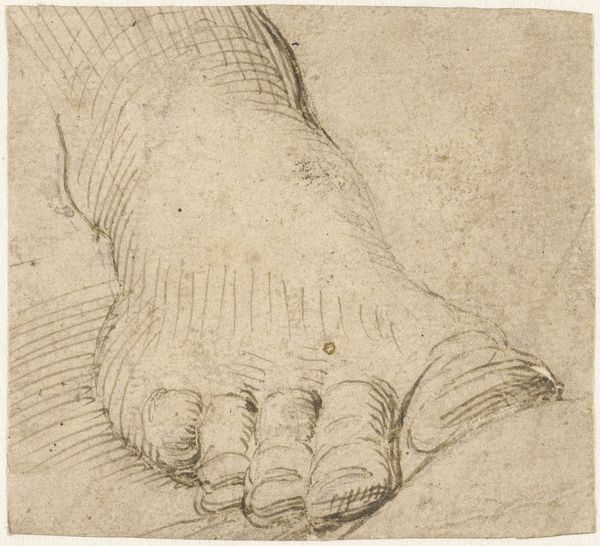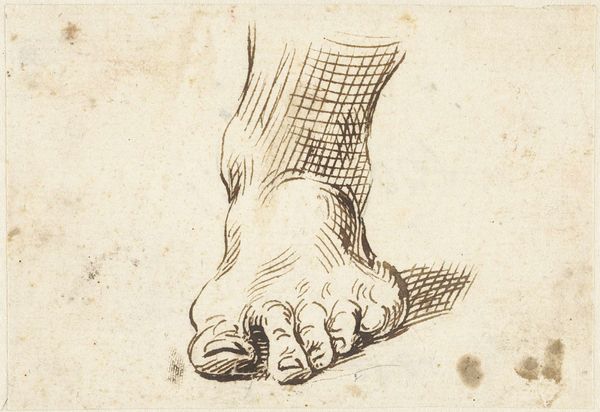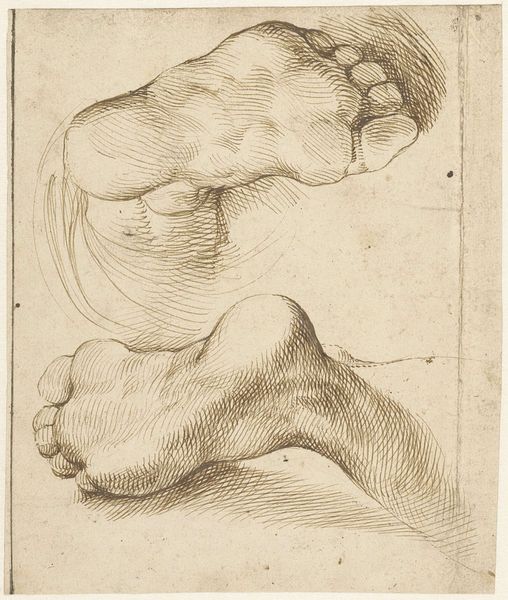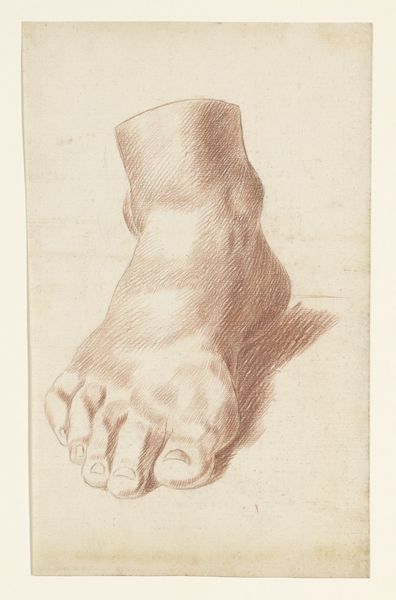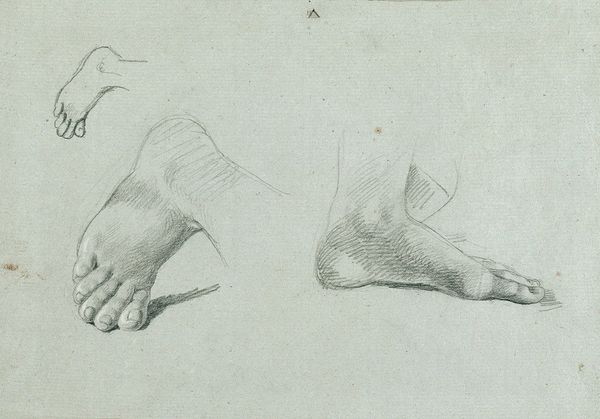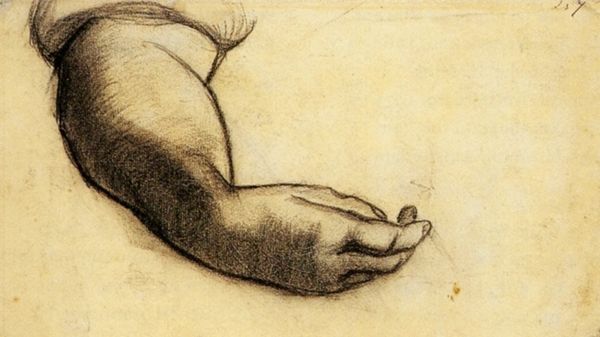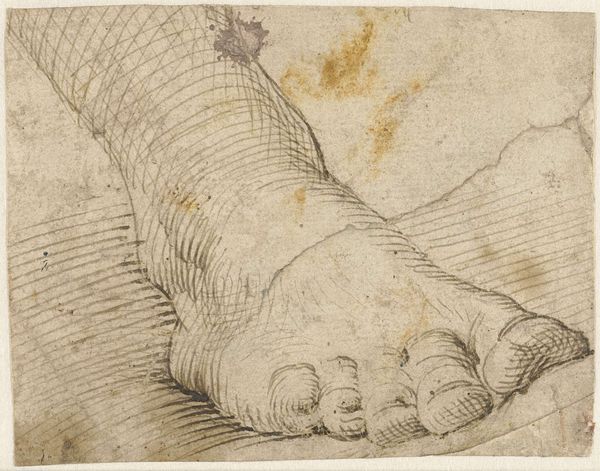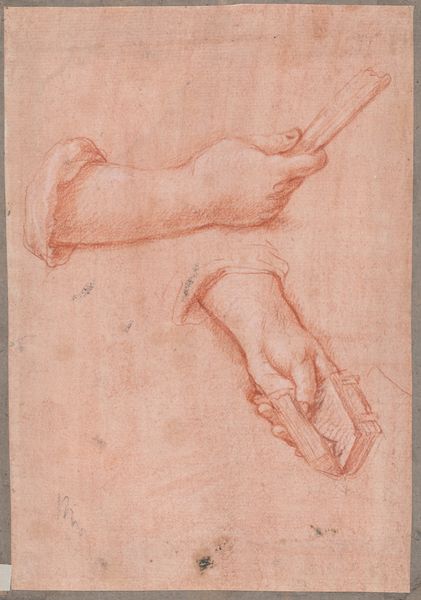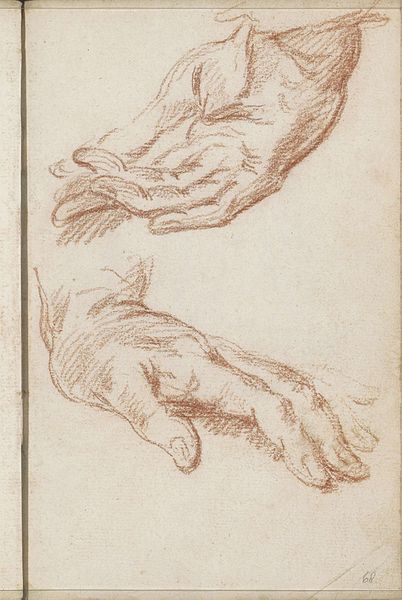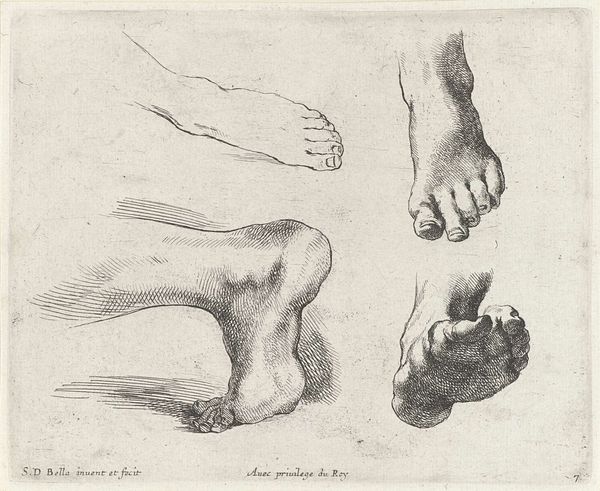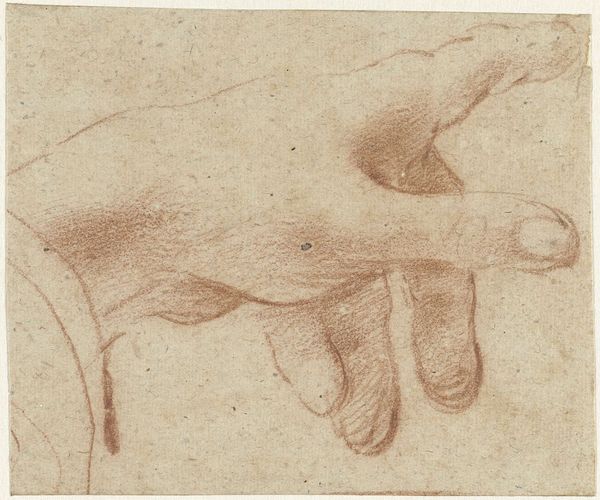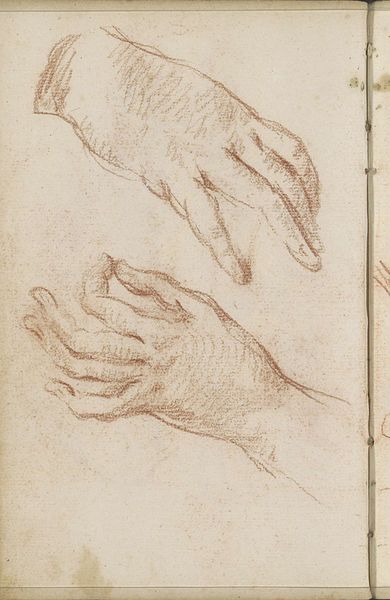
drawing, pencil
#
pencil drawn
#
drawing
#
pencil sketch
#
figuration
#
11_renaissance
#
pencil drawing
#
pencil
#
academic-art
#
italian-renaissance
#
nude
#
realism
Dimensions: height 111 mm, width 86 mm
Copyright: Rijks Museum: Open Domain
Editor: Here we have Agostino Carracci's "Study of a Left Foot, from the Front," created sometime between 1567 and 1602 using pencil. It’s surprisingly intimate for an anatomical study; almost like a portrait. What do you see in this piece, beyond the obvious subject matter? Curator: Well, firstly, remember where this was made. Consider the historical context. The Italian Renaissance placed renewed emphasis on classical ideals, especially the human form, didn’t it? What we see here, then, is not just observation but also reverence. Anatomical studies like this weren’t purely scientific; they were about understanding a divine creation. Notice how carefully the artist renders each tendon, each wrinkle. It speaks to the larger social investment in Humanism. Editor: I hadn’t thought about it in that light. It's almost like elevating a foot to a symbol of classical beauty, removing it from mundane realities. Curator: Precisely! Now, think about who these studies were *for*. Academic artists weren’t making art just to decorate parlors; they were often working for wealthy patrons, influential members of courts or of the Church who appreciated the cultural capital and prestige associated with supporting the arts and sciences. This also reinforces power structures. Editor: So, a study of a foot becomes a symbol of artistic patronage and societal values. Curator: Indeed. It reveals the socio-political function of art during the Renaissance, beyond its aesthetic appeal. It reveals how art serves to bolster existing hierarchies of power and how "neutral" images are rarely neutral. Editor: That gives me a lot to think about, particularly the political implications of even seemingly simple images. Curator: And remember, the beauty we find isn't always 'natural' but something cultivated and promoted by cultural institutions and powerful people within them.
Comments
No comments
Be the first to comment and join the conversation on the ultimate creative platform.
